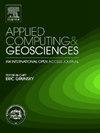Recent advances in explainable Machine Learning models for wildfire prediction
IF 3.2
Q2 COMPUTER SCIENCE, INTERDISCIPLINARY APPLICATIONS
引用次数: 0
Abstract
Climate change has caused increasingly frequent occurrences of forest fires around the world. Machine Learning (ML) and Artificial Intelligence models have emerged to predict both the onset of wildfires and evaluate the extent of damage a wildfire would cause. However, understanding what factors lead to generating models that exhibit optimal performance and providing insight into the importance of features on model outcomes is the subject of ongoing research. To help answer these questions, we propose a framework which adopts recent advances in methods for obtaining optimal models along with the application of SHAP (SHapley Additive exPlanations) values to obtain the most important features which affect the performance of wildfire prediction models. We use this framework as a classification task to predict the likelihood of wildfire occurrence based on environmental conditions, using a data set which represents instances of forest fires in Algerian, and as a regression task to predict the burned area once a wildfire has begun, using a data set from Portugal that recorded the area burned after a fire event. Insights provided by this framework allow us to assess the efficacy of specific ML models for wildfire prediction, ultimately making recommendations as to which ML models are more suited towards these challenging tasks.

用于野火预测的可解释机器学习模型的最新进展
气候变化导致世界范围内森林火灾的发生越来越频繁。机器学习(ML)和人工智能模型已经出现,既可以预测野火的发生,也可以评估野火可能造成的破坏程度。然而,了解哪些因素导致生成表现出最佳性能的模型,并深入了解特征对模型结果的重要性,是正在进行的研究的主题。为了帮助回答这些问题,我们提出了一个框架,该框架采用了获得最优模型的最新进展以及SHapley加性解释(SHapley Additive explanation)值的应用,以获得影响野火预测模型性能的最重要特征。我们使用此框架作为分类任务,根据环境条件预测野火发生的可能性,使用代表阿尔及利亚森林火灾实例的数据集,并使用来自葡萄牙的记录火灾事件后燃烧区域的数据集,作为回归任务,预测野火开始后燃烧区域。该框架提供的见解使我们能够评估特定ML模型对野火预测的功效,最终就哪种ML模型更适合这些具有挑战性的任务提出建议。
本文章由计算机程序翻译,如有差异,请以英文原文为准。
求助全文
约1分钟内获得全文
求助全文
来源期刊

Applied Computing and Geosciences
Computer Science-General Computer Science
CiteScore
5.50
自引率
0.00%
发文量
23
审稿时长
5 weeks
 求助内容:
求助内容: 应助结果提醒方式:
应助结果提醒方式:


